How To (And Not To) Buy Into A Watch Bubble
“Quick! I need an intervention,” my breathless voice pleaded. “The Rolex OP 41—”
“Let me guess,” watch buddy Andy’s reply was already bored, “it’s the one with the turquoise dial.”
“Ex-actly! It just hit $36K. It’s ready to skyrocket. I know it.”
“Steady there, friend.” Andy is a seasoned collector of expensive objects. “$36 large for a time-only, three-handed watch? Time for a reality check.” Then came the logic I didn’t want to hear. “Think of all the other watches you could buy with that sum. Failing that, hands off the computer and lay down until you realize this is just a pricing bubble.”
Andy’s counsel provided only temporary restraint.
In real life I run the municipal bond operations at an investment management firm. I know economic bubbles. I’ve seen three kinds: stock and bond market bubbles, credit bubbles, and commodity bubbles. It is the third type – commodities – we’re talking about here.
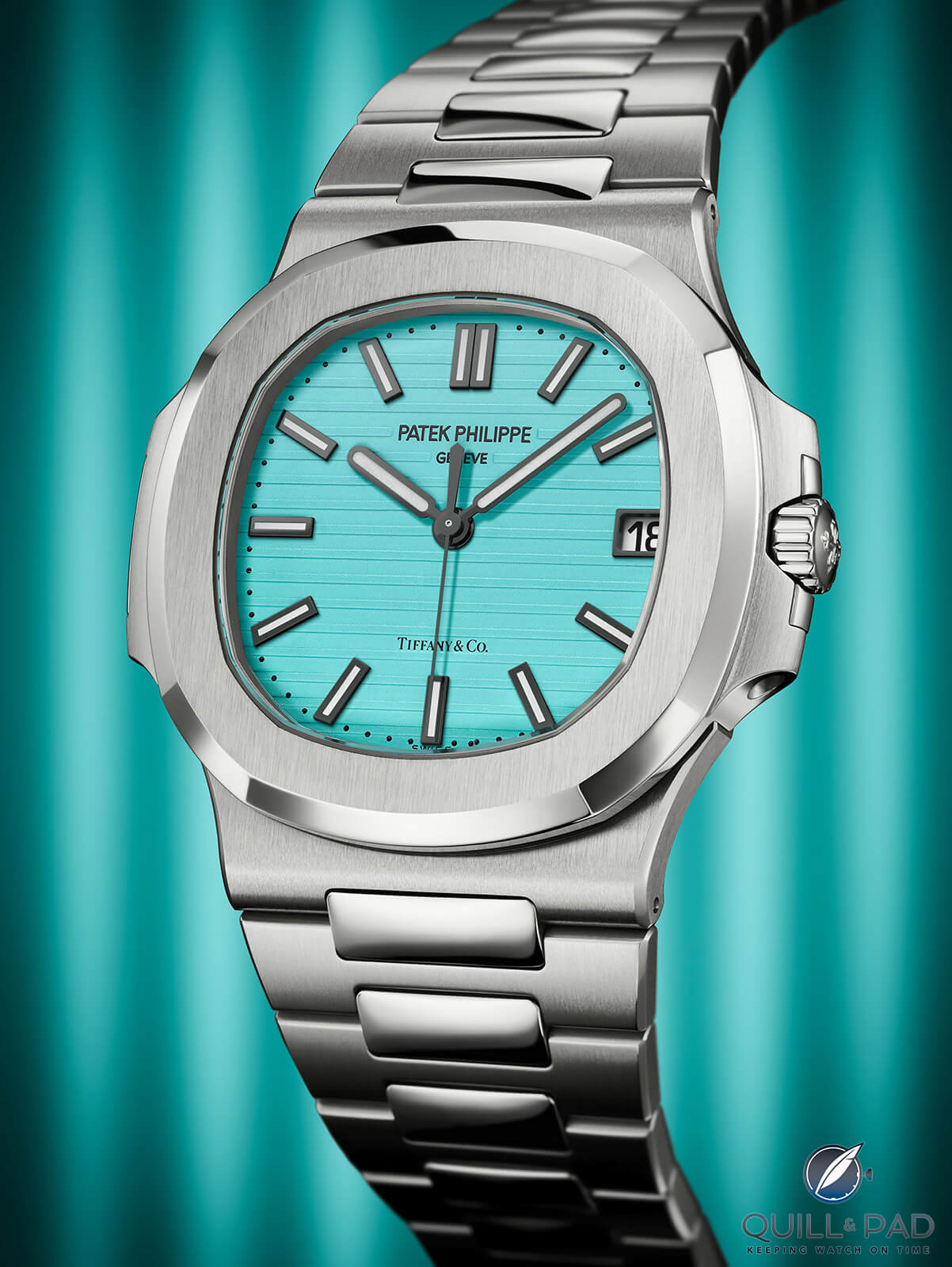
Tiffany & Co double-signed Patek Philippe Nautilus Reference 5711/1A-018
Bubble or not a bubble?
Patek Philippe’s Nautilus 5711/1A-018, co-signed by Tiffany with a dial in brilliant Tiffany blue, sold in the New York Tiffany boutique to just 170 of the retailer’s favorite customers for $52,635. This limited-edition piece was impossible to obtain for mere mortals. And one example was auctioned for charity, where it hammered for $6.5 million. On the rare occasions when they’re traded on the secondary market, these pieces are close to the mid-six figures. Is this watch in a bubble?
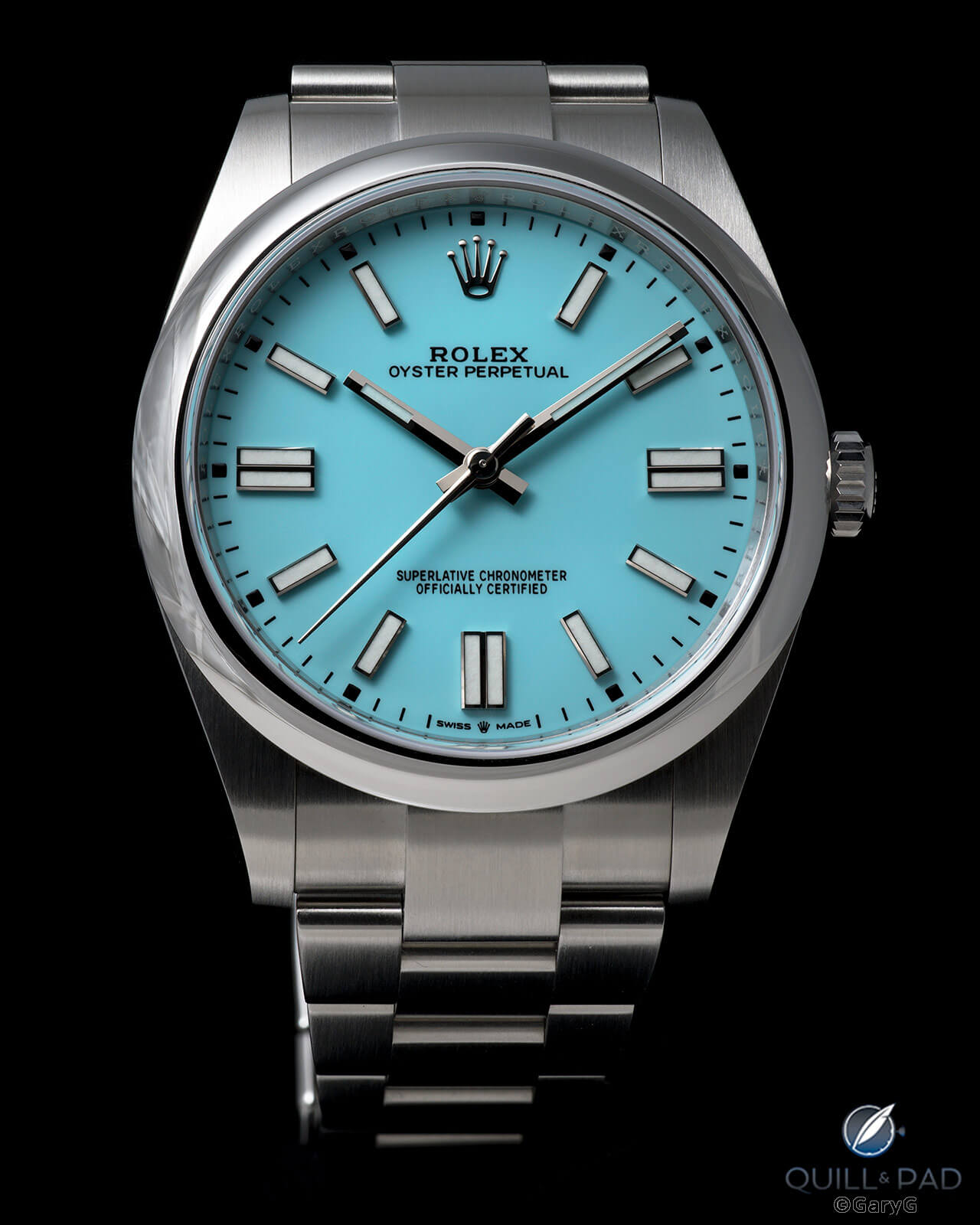
Similar yet distinct: Rolex Oyster Perpetual 41 in turquoise blue
Then there’s the aforementioned Rolex OP 41 in turquoise. Its original retail price at its introduction in September 2020 was $5,900 before being raised to $6,500. Finally, it was discontinued in March 2022 (but still exists in 39 and 36 mm sizes). The price for the 41 mm on the secondary market is all over the place but seems to have settled between $30,000 and $40,000. Is this watch in a bubble?
Some think that a rapidly soaring price is proof of a watch bubble. They could be right. Or not. Financial bubbles are tough to identify when they’re forming. They’re even more difficult to declare finished as prices collapse. Fair warning: everyone seems to have an opinion as to the definition of a bubble. None are wrong. You may disagree with my assessment. And I wouldn’t argue.
Watch bubbles add something else to the equation lacking in mere financial bubbles: passion, emotion, and the possibility of daily enjoyment. These outlier ingredients cloud the thinking of even the most rational of watch enthusiasts.
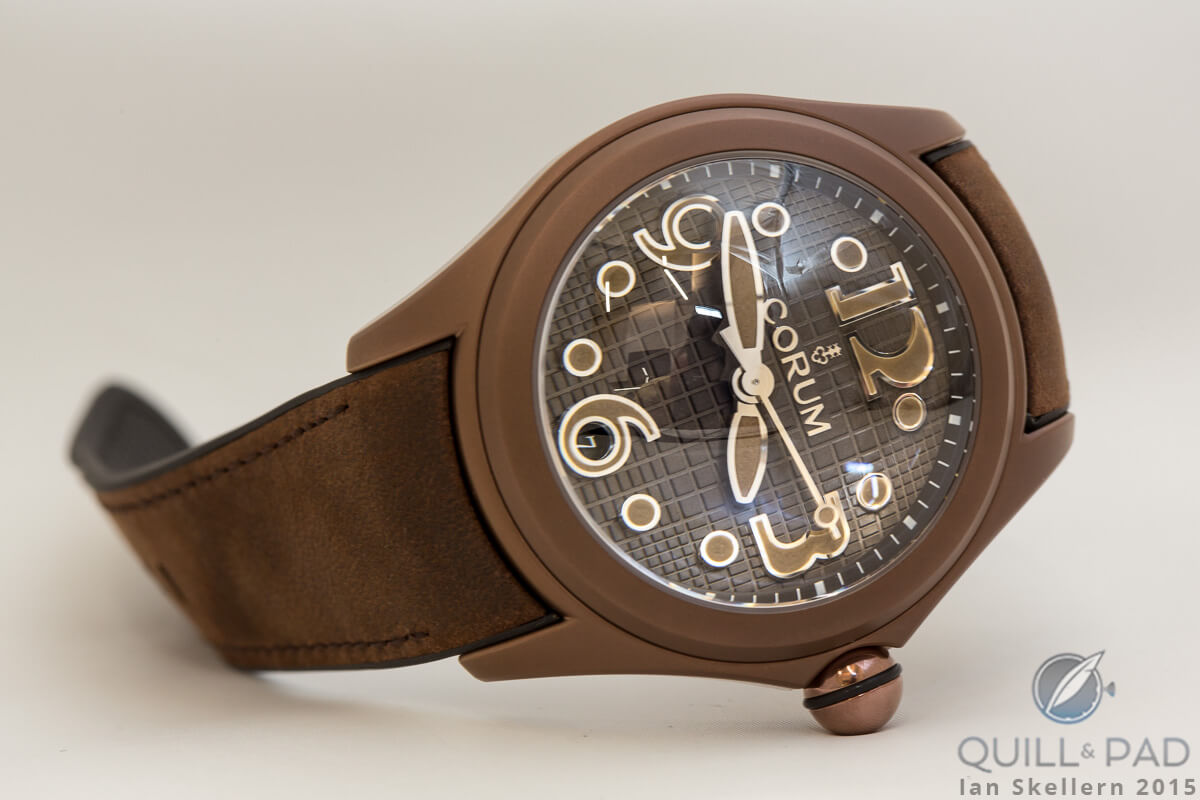
An unmistakable Bubble wristwatch by Corum
Historic bubbles
There have been loads of economic bubbles throughout recent history. During the painful dot-com bubble of 1999-2000 one friend quit his job, saying it cost him too much to work for a mere salary (about $150,000 annually at the time) when he made so much more from day trading. He later reentered the day-to-day workforce.
It took author Michael Lewis to document the 2006-2012 real estate bubble in The Big Short. People lost their homes and investors lost their shirts. Hollywood made a film of the same name about this seminal event in the chronicles of bubbles.
Remember the cannabis bubble of 2018-2021? Sundial Growers, Tilray, Aphria Aurora Cannabis, and HEXO were up 2,280%, 1,190%, 535%, 388%, and 341% respectively from February 2021 through the end of October 2021. This was a time when investors scratched around for anything promising outsized returns. Gallup’s national sentiment poll showed a record 68% of respondents favored legalizing marijuana. And the new senate majority leader, Chuck Schumer, promised to legalize marijuana in the United States. Pot seemed on the verge of becoming respectable. Why wouldn’t the pot stocks form a bubble? They did. And then the bubble burst.
The global pandemic created the COVID-19 bubble of 2020-2021. It seemed any biotech stock flogging a study that showed promise soared. Never mind that the FDA had not yet approved it or the study sample size proved statistically insignificant and unreliable.
Effects of a watch bubble on the rich
The rich are different from the rest of us. Not those with a few extra bucks to spare. No. I’m thinking of those loaded down with piles of cash to spend as they wish: on Ferraris, yachts named for their children, and ski chalets boasting a name rather than a street address only used a few days each year for example. And watches.
These lucky few are usually immune from the bubbles that affect others. Their resources are such that the cost of a watch in a bubble is immaterial. If they fancy the piece, they will get it. Price be damned.
This unique socio-economic stratum has the singular ability to keep a watch bubble inflated long after it should have burst.
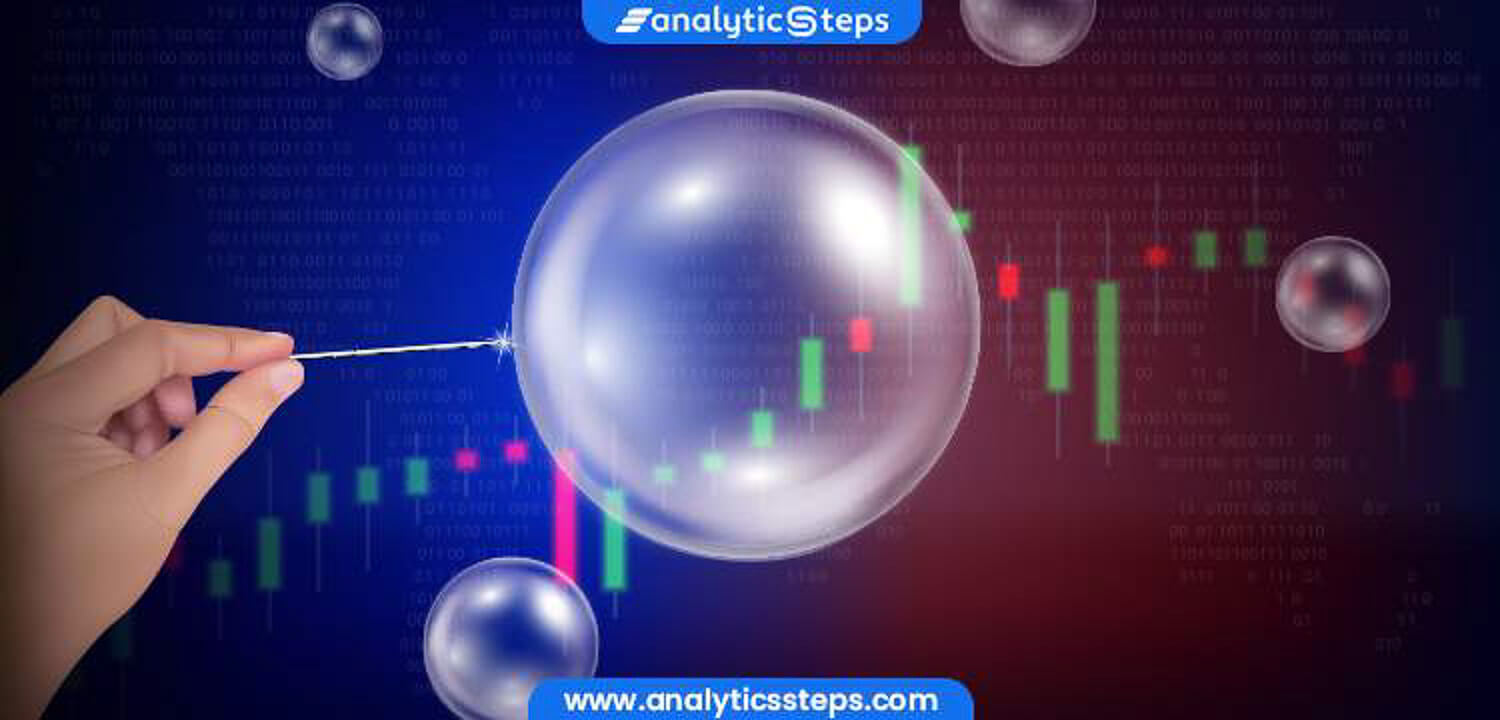
Bubble causes
Economist Robert Shiller calls irrational exuberance the psychological basis of a speculative bubble. Watch collectors (and speculators) rationalize such a single-minded pursuit by believing the price will continue climbing. Buy high, sell higher is their battle cry.
It is only after the bubble has burst that the contestants admit they succumbed to the bubble mentality. At least they have a beautiful watch to show for it. The same cannot be said of a stock or bond investment grabbed up in a bubble.
There is a herd mentality often associated with bubbles: if the herd is snapping up all the inventory of a rare piece then I should too. Collectors surrender to the immediate pleasure of holding the piece or opening the safe to show envious friends. They may even think they have beat the market. And for a time maybe they have. Until the bubble bursts and prices crash, leaving them in the embarrassing position of having paid up for a piece that is now out of favor. Collectors always tout the bargains they achieved, but rarely the humiliation of having been the rube.
Watch bubbles also create a kind of cognitive dissonance. Many participants accept only advice and information that confirms an already-held belief and ignores anything that doesn’t. This insulated silo of unvarying conformity builds the case for buying into an inflated bubble. It is what keeps a bubble growing and growing until it bursts.
Today’s hugely publicized watch auctions certainly contribute to bubbles. They plant the mistaken notion of achieving a sustained market value. Buyers see themselves as immune from the financial risk of buying a piece on the secondary market at a price that defies all common sense. The $6.5 million Patek Philippe auction of the Tiffany-blue Nautilus is an example. Even though the proceeds went to The Nature Conservancy (after all auction fees, I assume) it threw gasoline on the inferno of what was already a raging bubble for this rare timepiece.
But wait! There’s more! Embers from the Patek Philippe bubble blew to another, albeit less rare piece – the Rolex OP 41 in turquoise – and ignited another bubble. Watch speculators somehow got the idea (or conspired to create it) that just because these Patek Philippe and Rolex dial colors were similar, and both pieces were no longer available at retail, that the Rolex price should also soar into a bubble. As of this writing, maybe it has.
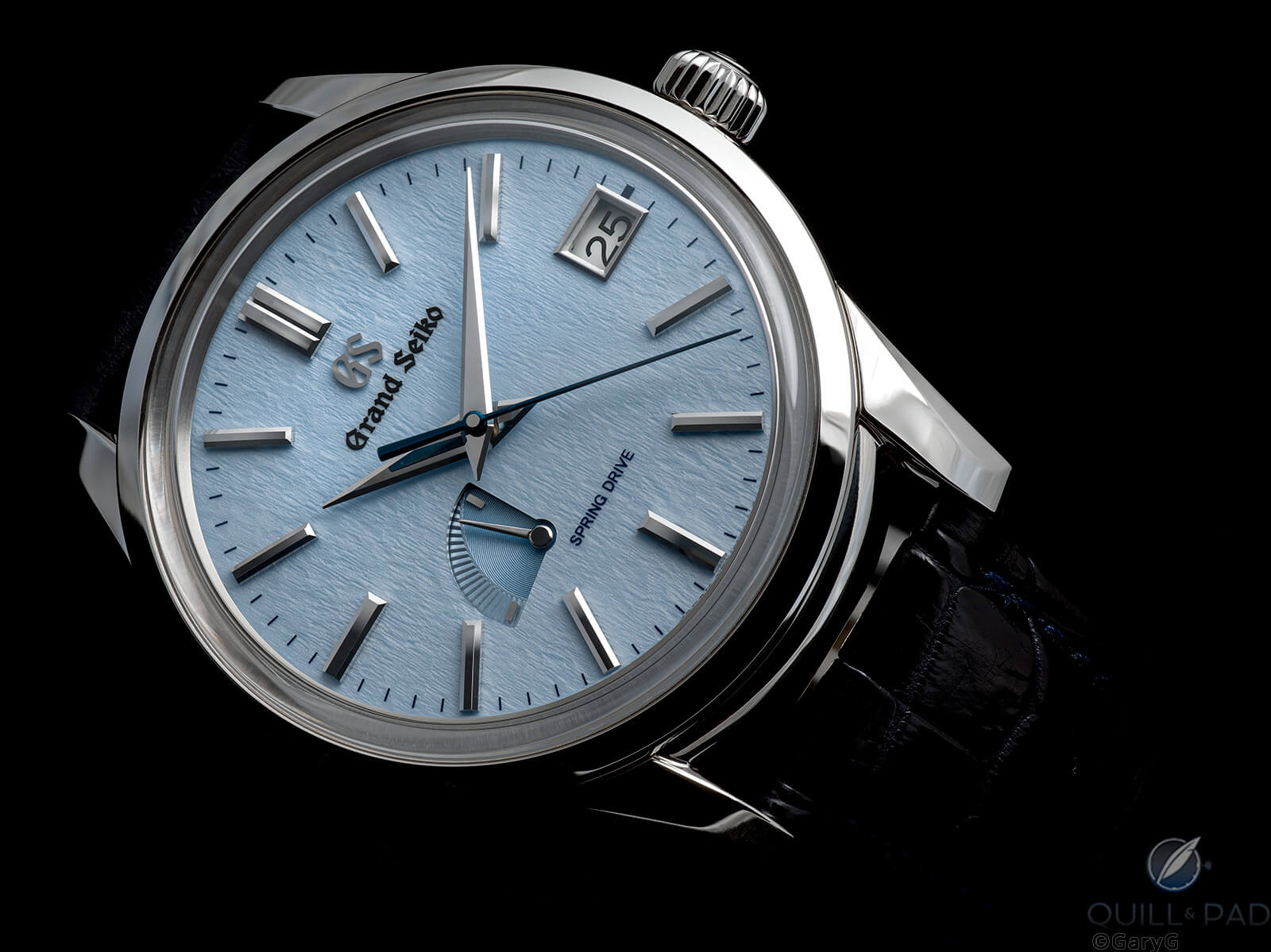
Grand Seiko Spring Drive Snowflake
If this were true, then why isn’t the Grand Seiko Blue Snowflake Spring Drive enjoying a similar price surge? This watch also sports a beautiful light blue dial. It has been on the market since 2010, still sells on the secondary market for about what its original retail price was – $5,800 – and is readily available.
The five phases of a watch bubble
- Dwindling availability: You see inventory and availability of a specific piece shrinking or gone altogether. Examples are everywhere. Patek Philippe and Rolex both discontinue popular pieces from time to time. The authorized dealer pipeline dries up. So does the secondary market as collectors and speculators hoard their pieces, hoping a bubble forms.
- Boom phase: Price increases gather momentum as more participants enter the market. The piece attracts widespread media coverage. Fear of missing out on what could be a once-in-a-lifetime opportunity spurs more speculation from an increasing number of buyers. Exuberance feeds on itself and prices take off.
- Euphoria: Watch buyers throw both logic and caution out the window. Prices are really skyrocketing now. The watch “experts” invent new valuation metrics to justify the relentless price rise. Buyers at this point believe no matter how high prices go, there will always be others willing to pay more – the greater fool theory.
- Prices top out: The price rocket finally reaches its apex of flight and heels over. Sellers start dumping. Profits narrow as prices fall. Now is when the bottom feeders emerge, thinking the bubble is gone and this is the time to pounce. It is not, at least not yet. Economist John Maynard Keynes said, “The markets can stay irrational longer than you can stay solvent.” Sage advice.
- Losses mount: The market falls apart. Panic sets in for cash-strapped speculators (often found on eBay). They liquidate at any price. Finally, supply floods the market, overwhelming demand. Prices fall off the cliff. The bubble has burst.
A word of caution
Since the pandemic there has been a lot of cash sloshing around the international markets. Without travel to consume idle funds, some are turning to expensive collectables to occupy time and capital. Prices continue rising.
Many of these people are astute investors in other things and they use this expertise in their watch dealings. They cannot help but feed their innate hunger for profit – even in our shared noble hobby. Inevitably this hunger will give way to the larger hobby of making money by flipping just another commodity.
For professional traders the less time you hold the asset before turning it over for profit, the better. Working capital is expensive. How can a regular hobbyist compete with such professionals on their home field in the game they have so expertly made their own?
Buy if you must
I totally understand that you may disagree with me up this point. It could be that cognitive dissonance thing talked about earlier. Maybe not. So, after everything I’ve said here, if you must buy into what you know is a watch bubble, here’s how to do it.
- Wait until either a decline in prices or the bubble bursts, then buy the piece on its way down. Though this is like trying to catch a falling knife. Here’s your justification: if it has been discontinued the price will probably creep up again, confirming your astute trading ability and utter brilliance.
- Buy a piece that’s similar to the bubble watch but not yet fully engulfed: one idea is buying the $5,800 Grand Seiko Blue Snowflake (brand new, unworn, full set, and readily available) instead of a used $36,000 Rolex OP 41 in turquoise that’s been ridden hard and put up wet.
- Beware the bear market rally: there’s often a time after the bubble bursts when prices seem to have bottomed and are coming back. Keep your powder dry. It’s probably just a fool’s rally (a dead cat bounce to us in the securities biz). Still, if prices continue running up for at least two weeks, the bubble has probably burst and prices have already hit bottom. You are cleared to lift that offer.
- Watch for pump-and-dump schemes. Sometimes owners collude to sell among themselves at inflated prices to generate irrational exuberance and perpetuate that greater fool theory. Often retailers put a rare piece on offer for multiples of the already bubble inflated price. Suddenly the bubble price doesn’t seem so unreasonable. Resist!
- At the end of the day, so what if you overpaid for a watch during a bubble. It provides a nice measure of joy and happiness. Whereas the same cannot be said of that hot stock you bought in a frenzy that has declined in price.
What to buy in a known bubble
Exclusivity is king in bubbles. Full set, never-worn pieces are fungible – the price should be in context with the (bubble-inflated) market. If not, then there’s something wrong. Pass on the purchase.
Ask yourself if you love it. Will you be happy owning it while knowing that you paid up for the piece after its price has fallen by half or more?
Buy it if you don’t care that you overpaid or if your resources are such that it doesn’t matter one whit.
Buy with the intention of holding it for a long time.
Buy a name brand with a history of value appreciation.
Be sure of the brand’s servicing because you will need servicing over the long haul.
Is it authentic and do you have recourse against the seller if it proves a fake? Does the serial number on the paperwork match that engraved on the watch? Did you have a watchmaker open the back to verify the movement is authentic? If the price seems too good to be true in a bubble market, it is. Pass.
What is the condition? Have you held it, examined it, worked the pushers, the crown, wound it, tried the clasp?
If it is represented as a full set are the set components – box, paperwork, warranty card – also authentic and match the piece?
Be sure your collection is diversified and the new addition fits regardless of cost.
Quick Facts Patek Philippe Nautilus Reference 5711/1A-014
Case: 40 x 8.3 mm, stainless steel
Movement: automatic Caliber 26-330 S C, 28,800 vph/4 Hz frequency; 35-45-hour power reserve, Gyromax balance, Spiromax balance spring, Patek Philippe Seal
Functions: hours, minutes, seconds; date
Limitation: 170 pieces
Retail price: $53,000; secondary market price $375,000 or more (probably much more)
Chris Malburg has been a contributing writer to Quill & Pad for several years. He is also a novelist and has just published his latest book, Slider, on Amazon.

You may also enjoy:
Why I Bought It: Rolex Stella-Inspired Oyster Perpetual 41 With Turquoise Blue Dial
Why I Bought It (Despite The Strap And Buckle): Grand Seiko Blue Snowflake Reference SBGA407
Leave a Reply
Want to join the discussion?Feel free to contribute!



How quickly things have changed since this article was written. Are we in the midst of a correction, or the beginning of a collapse?
The $6.5 million Tiffany Nautilus sale fell through, so the watch allegedly went to the underbidder seen on the left side of the auction room, who happened to be a consultant on the payroll of …..Phillips.
Skyflake won’t bubble in our lifetime: wrong shade of blue (tiffany is what’s bubbling), as long as the word seiko features on the dial the bubble brakes are on (lexus don’t feature toyota in their name for a reason…I reckon they should move to just “GS” branding or use the credor brand) and its made in too large quantities to be scarce for a loooong time. In this “pastel blue” category its the halios seaforth that will bubble in future I reckon, if indeed pastel blue watches even bubble.